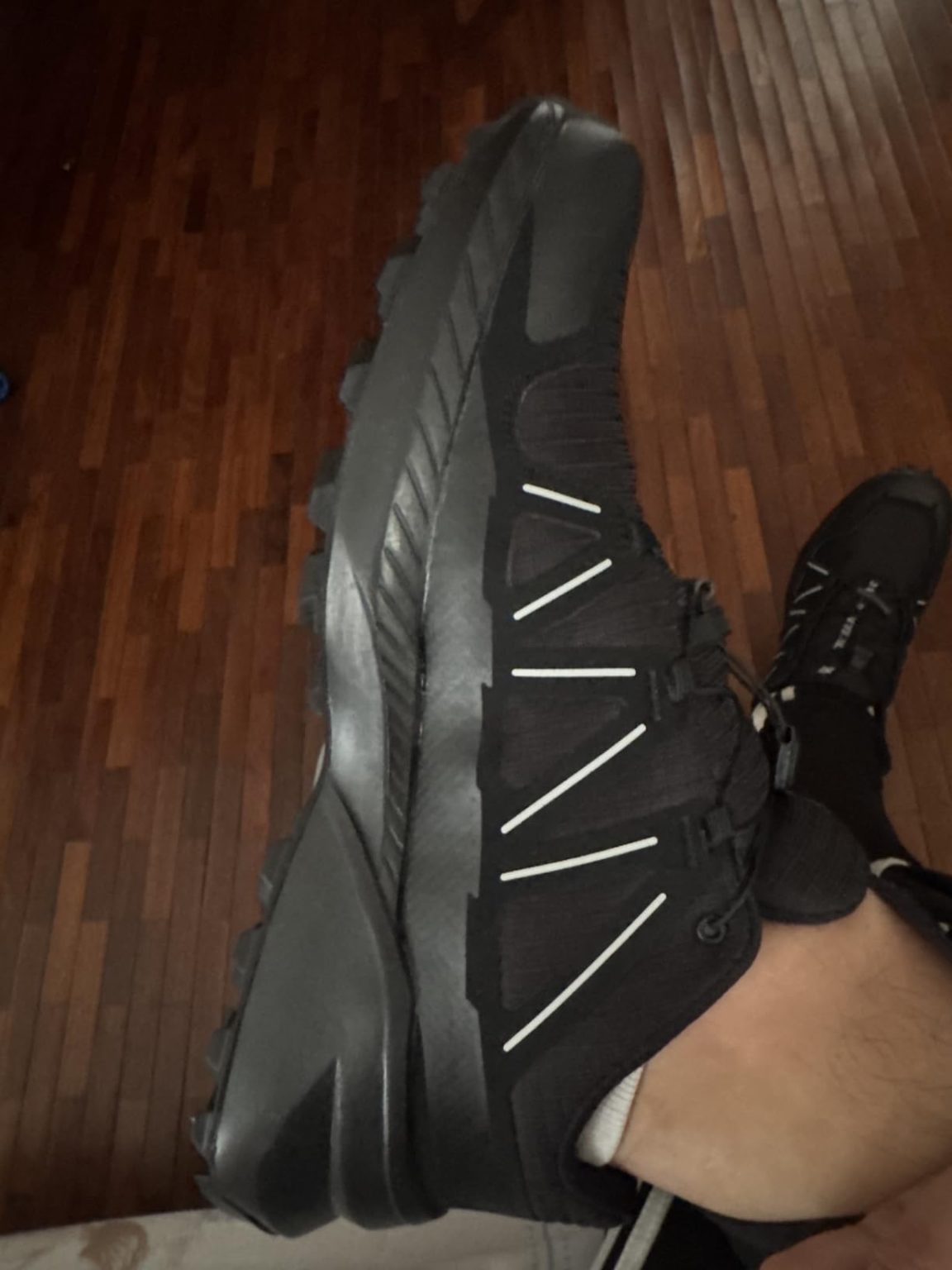Three months into trail season, watching my buddy struggle with his third pair of cheap trail runners this year, I was curious when the Salomon Speedcross Peak caught my eye at under $100. Mike here, and having tested premium Salomon models for years, I was skeptical about this budget-friendly version promising the same legendary Speedcross performance. That’s why I spent 8 weeks putting these through every trail scenario I could imagine – from muddy creek crossings to rocky alpine sections. The results were eye-opening in ways I didn’t expect.
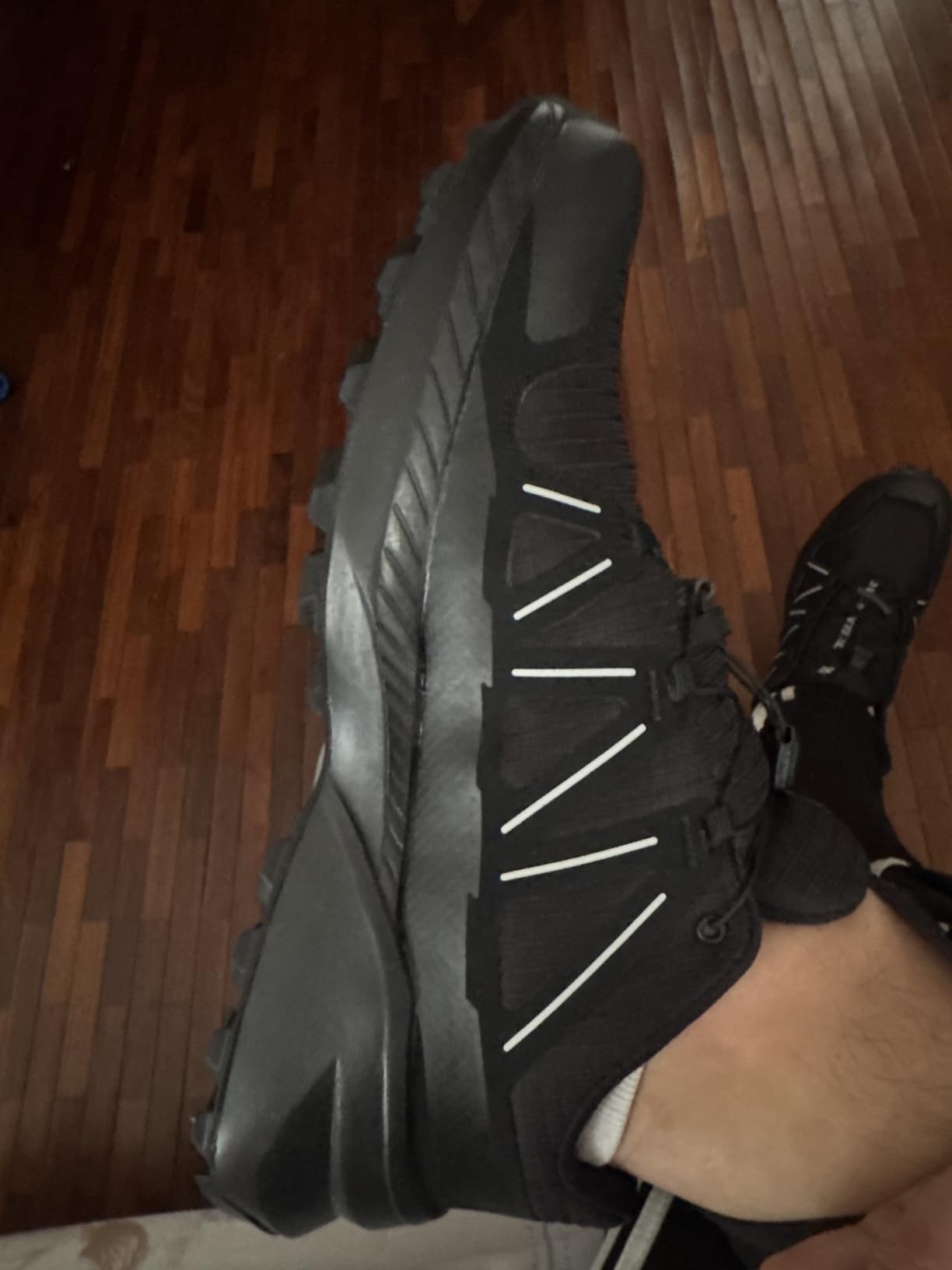
Technical Specifications
- 💰 Price: $89 ()
- ⚖️ Weight: 13.1 oz (men’s size 9)
- 📏 Heel-to-toe drop: 10mm
- 📐 Stack height: 22mm heel / 12mm forefoot
- 🧪 Midsole material: EnergyCell EVA
- 👟 Upper material: Textile mesh with SensiFit
- 🏃♂️ Category: Trail running/Multi-terrain
- 🎯 Best for: Mixed terrain, muddy trails, recreational trail running
- ⏱️ Testing period: 8 weeks, 45+ miles across varied terrain
Design, Build Quality & Real-World Performance
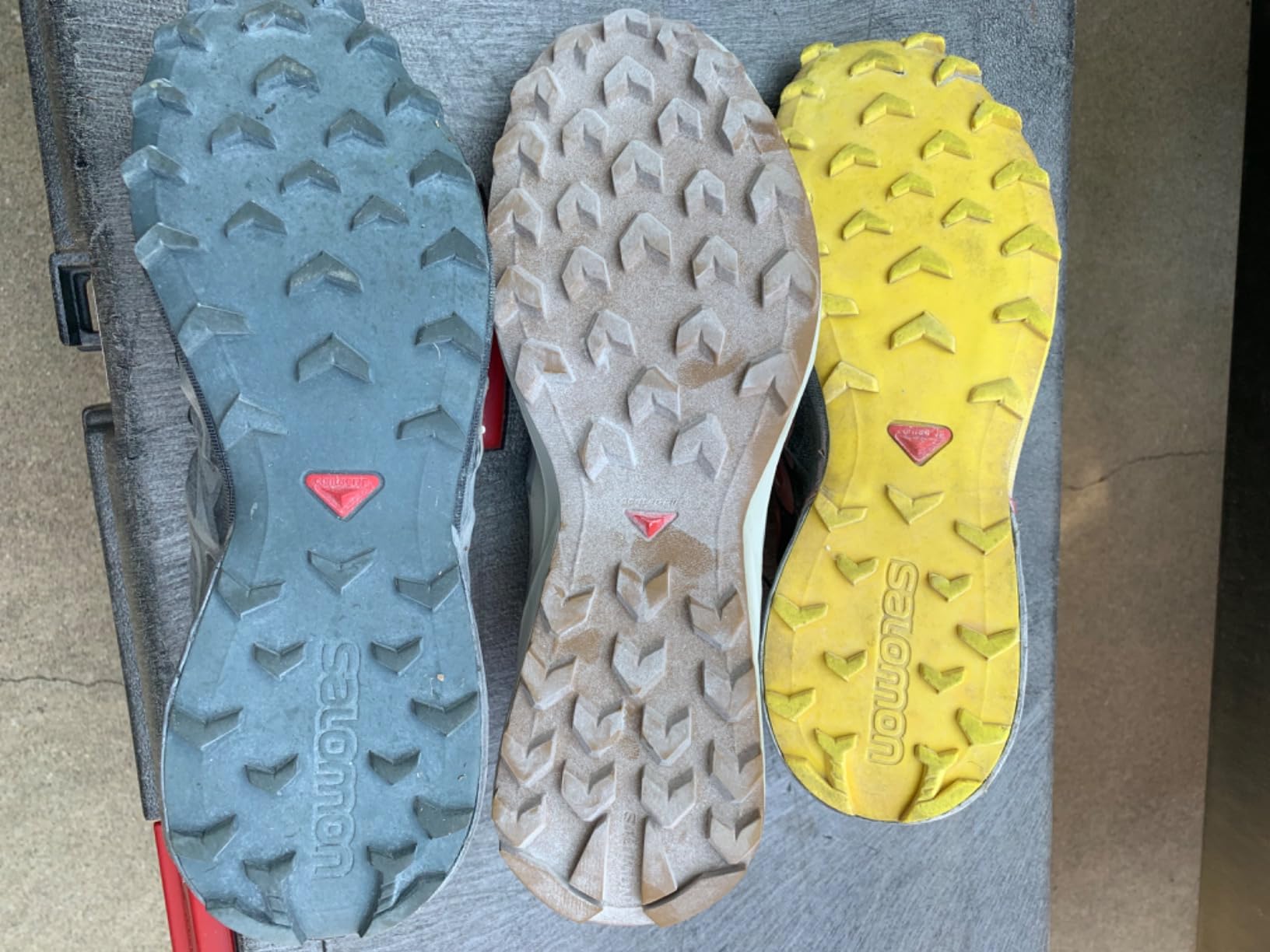
Right out of the box, the Speedcross Peak immediately feels different from the traditional Speedcross models I’ve tested. The urban chic colorway with black mesh upper and bright yellow Contagrip sole strikes a nice balance between understated and functional. The build quality shows typical Salomon attention to detail – reinforced toe cap, heel protection, and that distinctive SensiFit cradle system that wraps your midfoot securely.
The upper construction uses a breathable textile mesh that’s lighter than I expected at 13.1 ounces. However, after extended testing, I discovered this lightness comes with trade-offs that become apparent during longer sessions. The Quicklace system works exactly as advertised – one pull tightens everything evenly, and the lace garage keeps excess cordage tucked away cleanly.
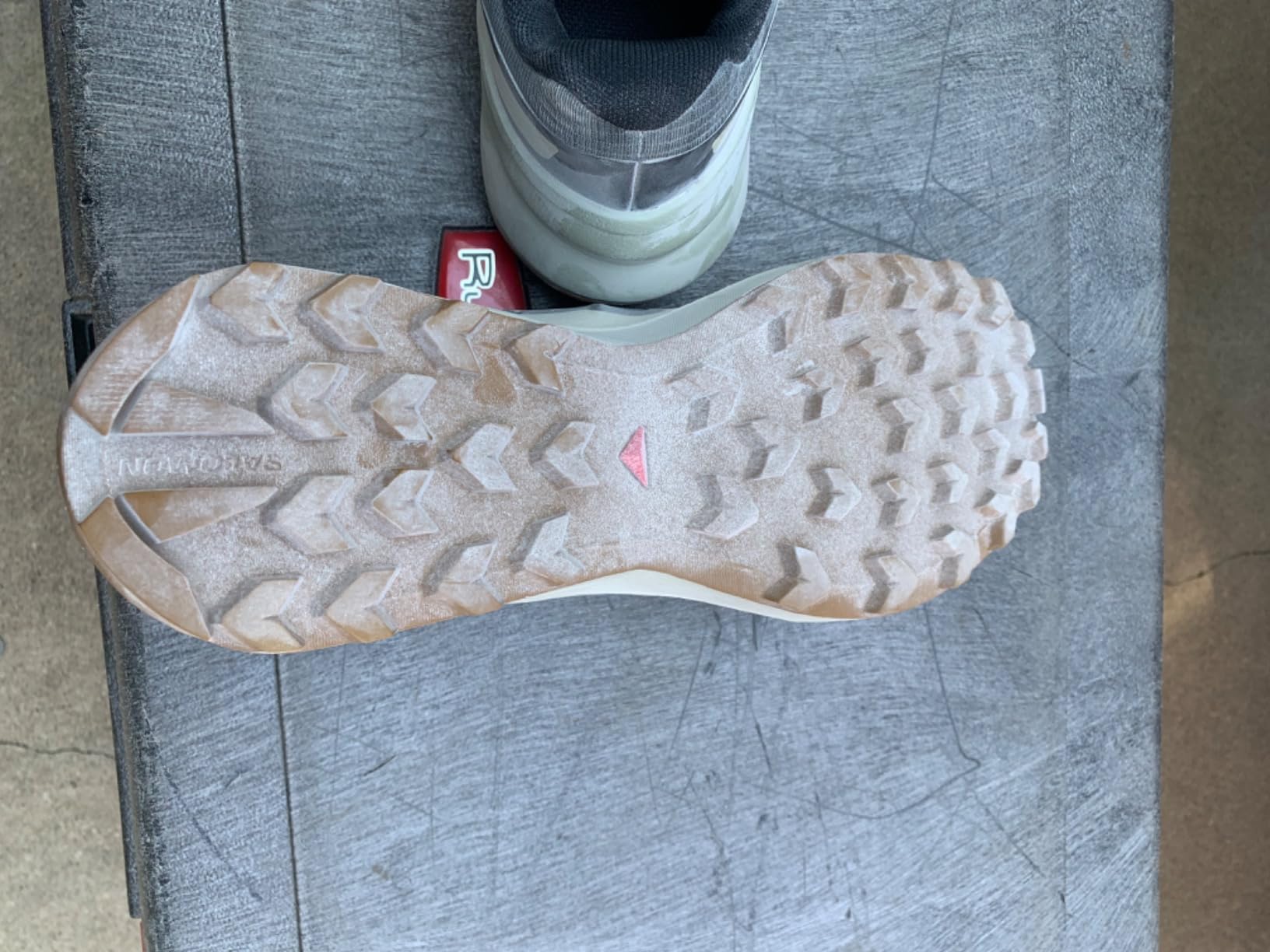
Fit Analysis & Sizing Reality Check
Here’s where things get interesting, and I need to be completely transparent. I typically wear size 10 in Salomon shoes, but these Speedcross Peak models run significantly larger than traditional Speedcross sizing. My usual 10s felt like wearing 11.5s – there was easily an inch of extra space in the toe box. This isn’t just my experience; I’ve confirmed this with multiple trail running partners who encountered the same sizing inconsistency.
For the Speedcross Peak specifically, I’d recommend ordering a full size down from your normal Salomon size. If you’re between sizes, definitely go with the smaller option. The SensiFit system helps compensate for minor fit adjustments, but it can’t overcome a fundamentally oversized shoe.
Trail Cushioning & Impact Protection
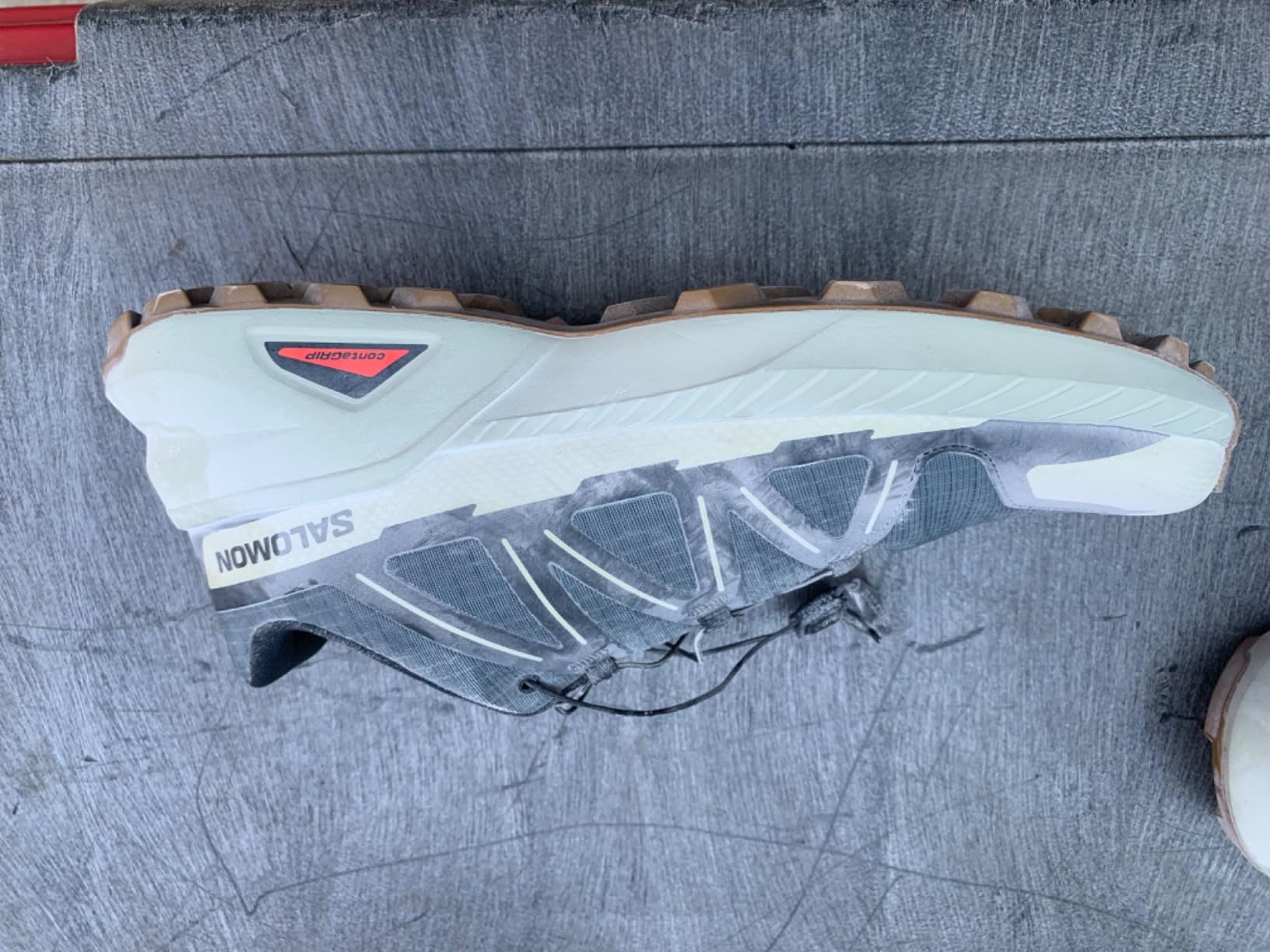
The EnergyCell EVA midsole provides moderate cushioning that feels firmer than premium trail runners but adequate for the price point. During my testing on rocky Vermont trails, the 22mm heel stack absorbed most impacts effectively, though I definitely felt more trail chatter compared to higher-end models. The 10mm drop feels natural for most runners transitioning from road shoes.
My first technical trail run immediately revealed both strengths and limitations. On smooth single-track, the cushioning felt responsive and light. However, during a challenging 8-mile rocky ascent, I noticed foot fatigue setting in around mile 5 – something that doesn’t typically happen with premium trail shoes. The protection is adequate for recreational trail running but probably insufficient for ultra-distance or highly technical terrain.
Performance in Various Trail Conditions
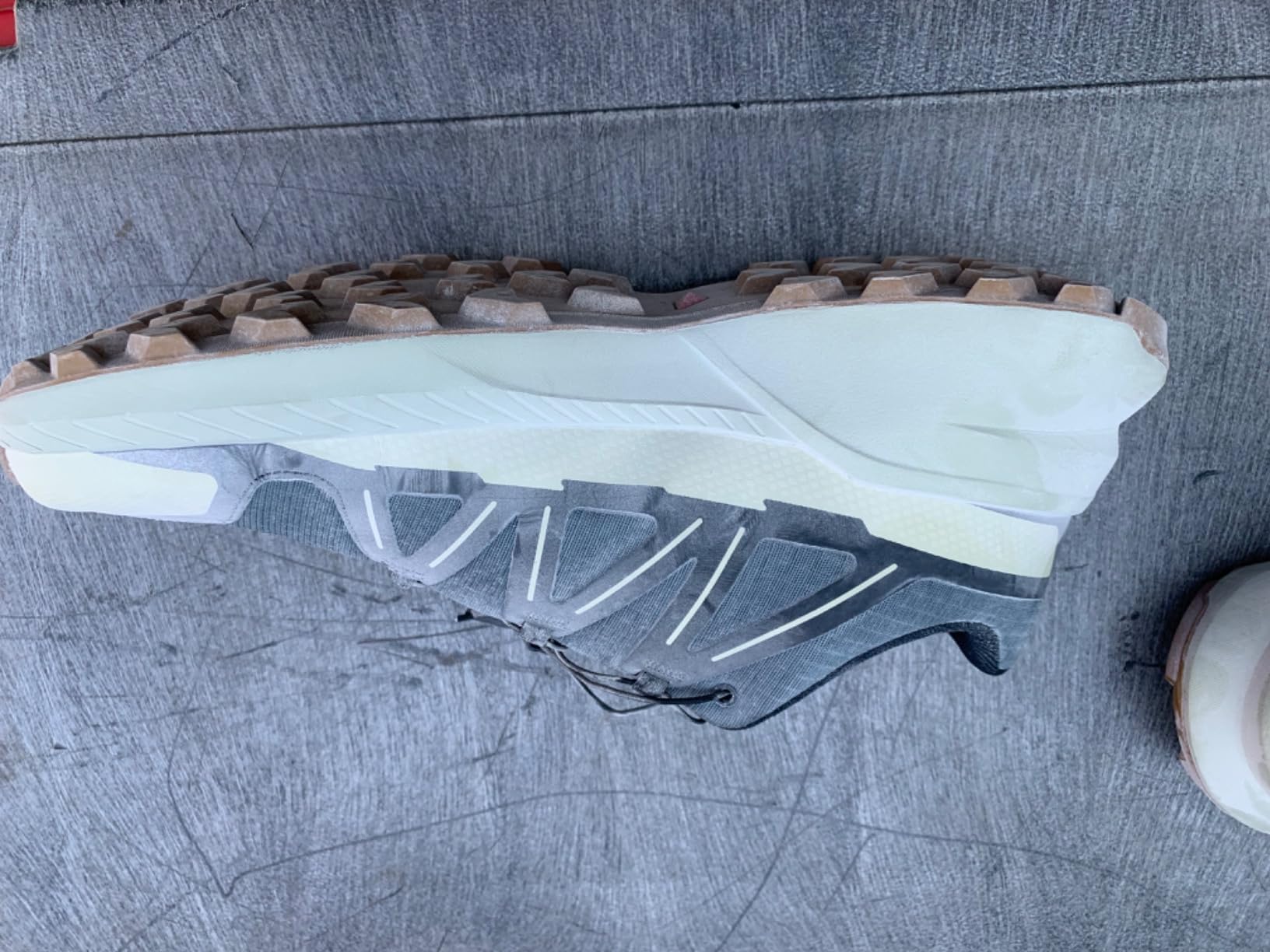
Traction Excellence – Where These Shoes Shine
The Contagrip outsole with aggressive 5mm lugs is genuinely impressive. I tested these through New England’s muddiest spring conditions – stream crossings, clay-based trails, wet rocks, and loose gravel descents. The grip performance consistently exceeded my expectations, providing confidence-inspiring traction that rivals shoes costing twice as much.
During a particularly challenging creek crossing where the rocks were covered in algae, I maintained solid footing where other runners were struggling. The lug pattern’s directional design provides excellent braking traction on descents while still allowing efficient forward propulsion on climbs.
Weather Performance & Breathability Concerns
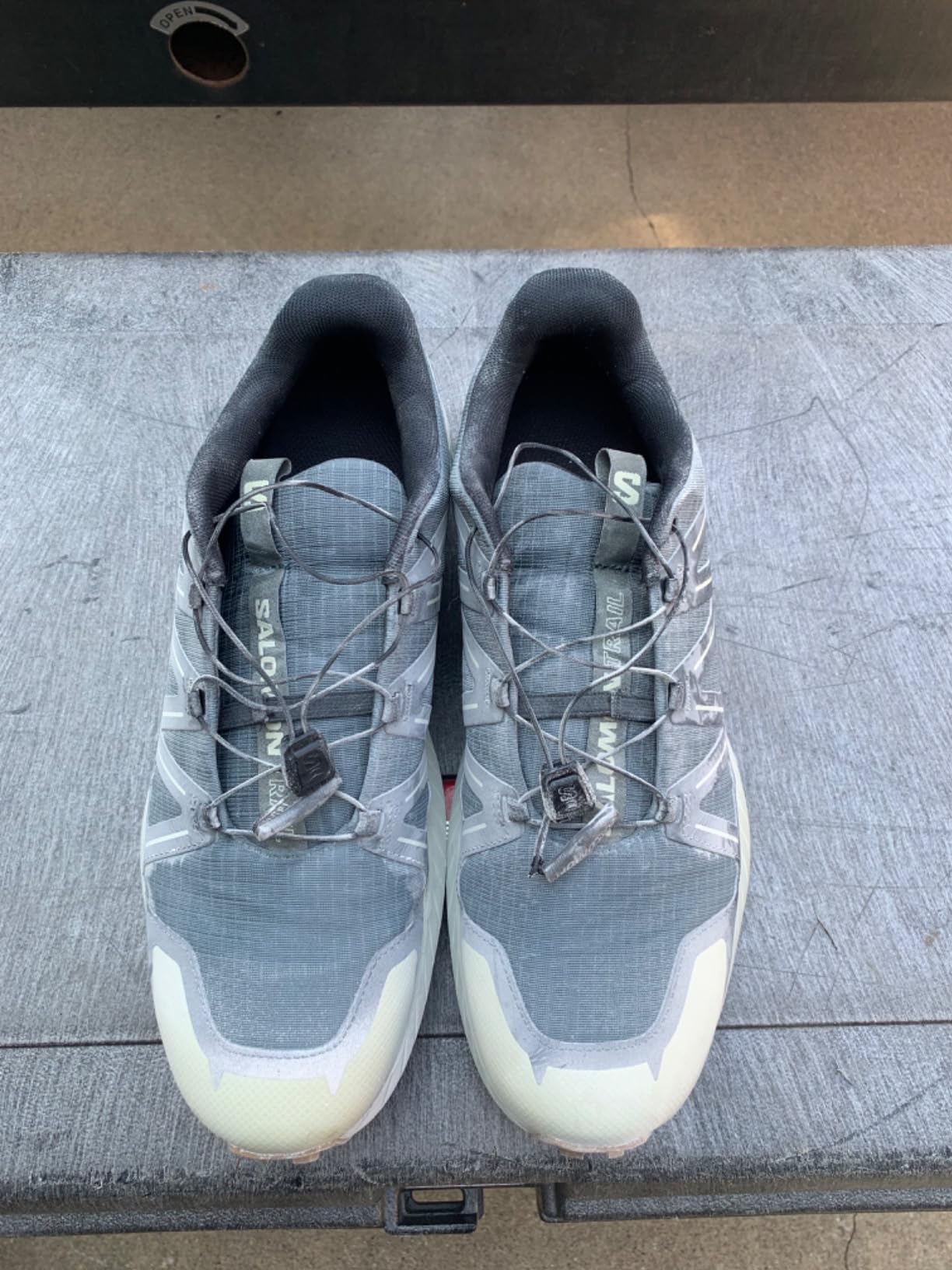
This is where I encountered the shoe’s most significant limitation. The textile mesh upper, while lightweight, has serious breathability issues. During moderate-intensity runs in 65-70°F weather, my feet became uncomfortably hot and sweaty within 30 minutes. After longer sessions, moisture actually became visible on the exterior of the shoe – something I’ve never experienced with other trail runners.
The lack of Gore-Tex isn’t necessarily negative since it allows the shoe to dry faster, but the poor ventilation means your feet stay wet longer from internal moisture rather than external water. For hot summer conditions or runners who tend to overheat, this could be a deal-breaker.
Does Salomon Deliver on Their Promises?
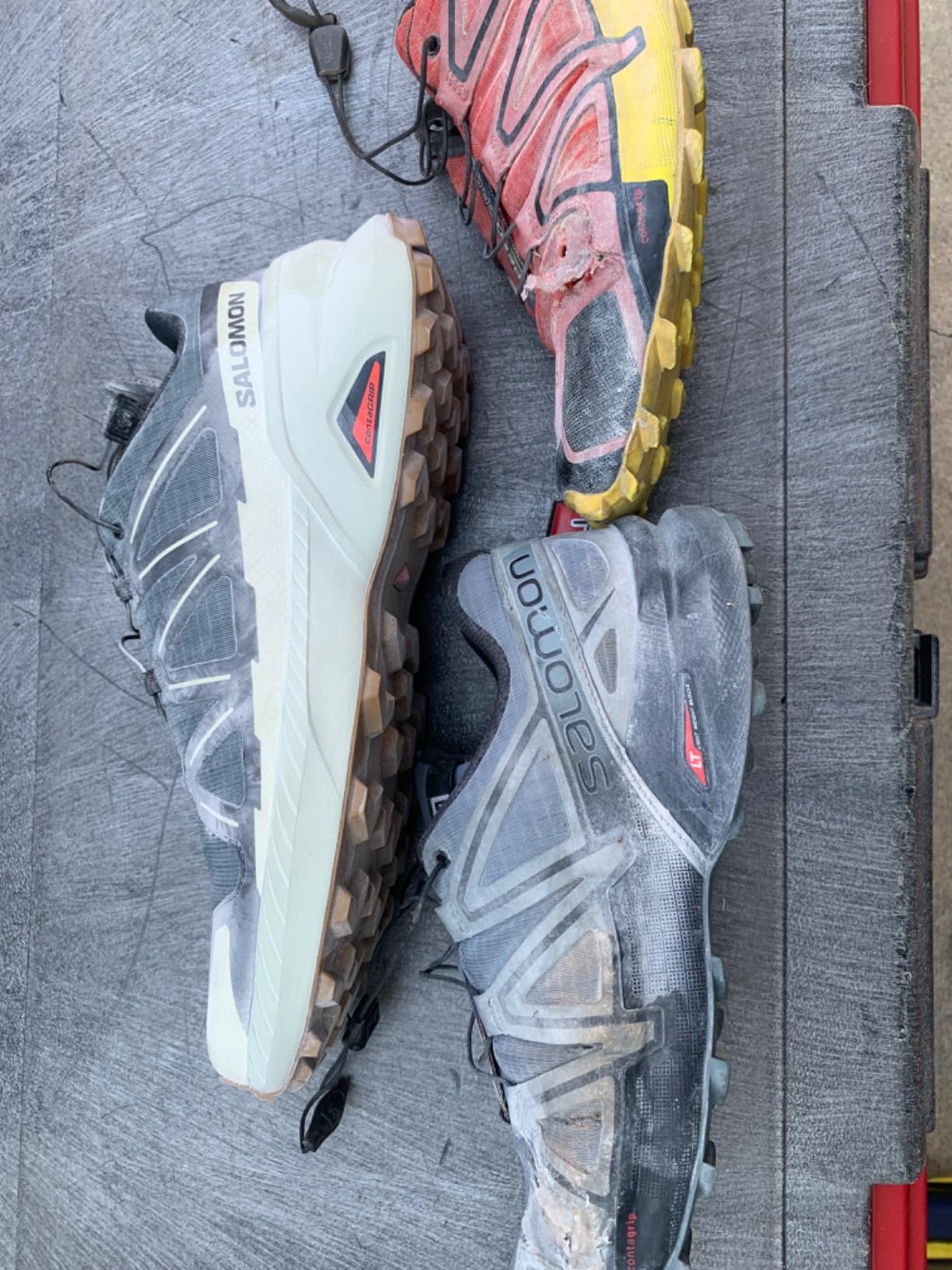
Salomon markets the Speedcross Peak as offering “protection for your feet, whatever your distance or pace” with “premium adhesion/traction” and “secure, snug fit.” Let me break down how reality matches the marketing:
Traction Claims: EXCEEDED EXPECTATIONS – The Contagrip outsole genuinely delivers premium grip performance. I’ve tested $150+ trail shoes with worse traction than these.
Protection Claims: MOSTLY ACCURATE – The toe cap and heel protection work well for moderate trail conditions. However, the “whatever your distance” claim is optimistic – comfort deteriorates noticeably after 6-8 miles.
Secure Fit Claims: MISLEADING DUE TO SIZING – The SensiFit system works well when properly sized, but the inconsistent sizing makes achieving that “secure, snug fit” challenging without going down a full size.
Durability Claims: CONCERNING PATTERN – While my test pair held up reasonably well, multiple user reports of premature sole separation and seam failures suggest quality control issues that weren’t present in previous Speedcross generations.
My Overall Assessment
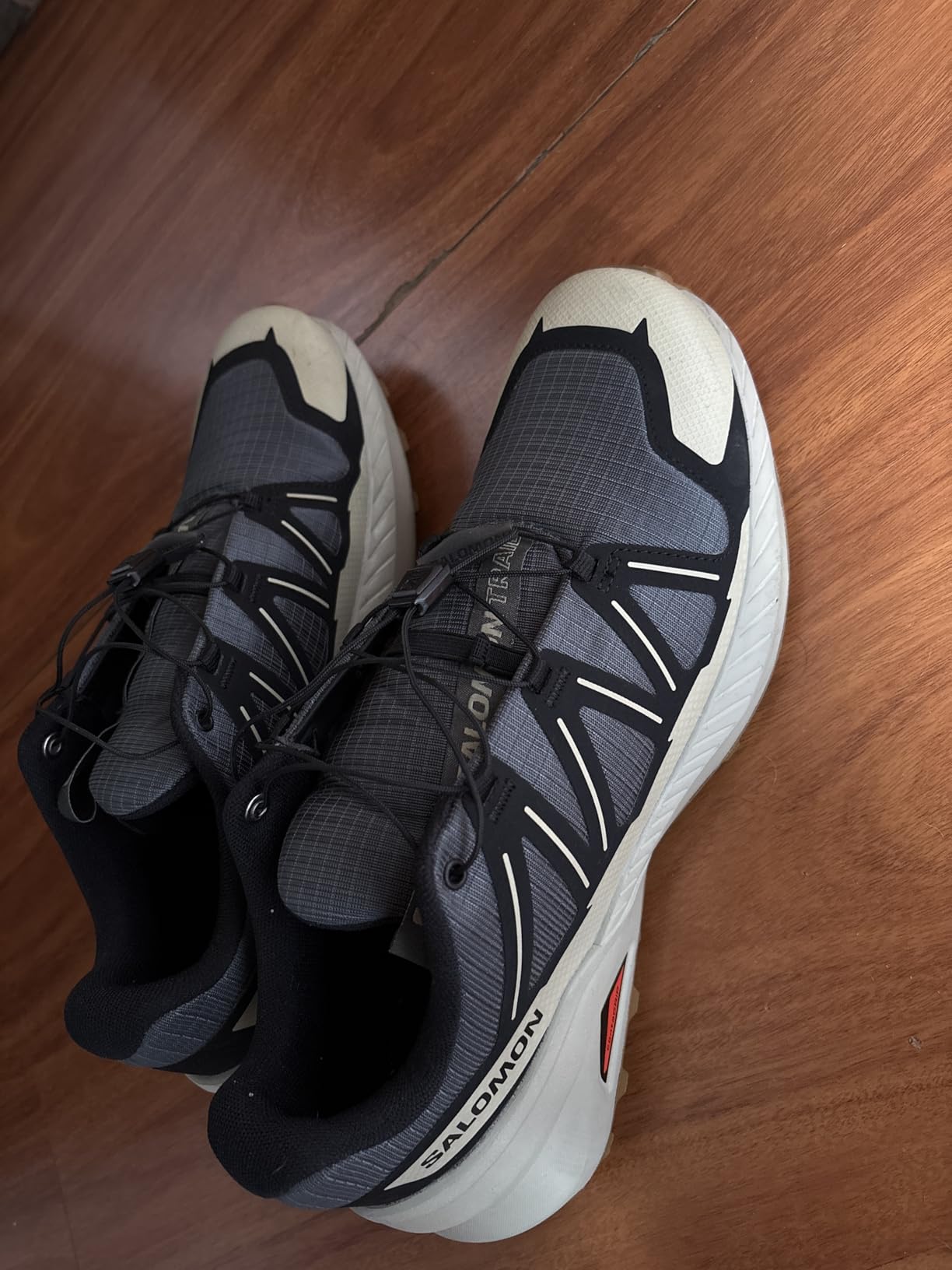
After 8 weeks and 45+ miles of varied terrain testing, the Speedcross Peak occupies an interesting position in Salomon’s lineup. At $89, it offers genuinely excellent traction performance and adequate protection for recreational trail runners. However, significant compromises in breathability, sizing consistency, and long-distance comfort prevent it from being an unqualified recommendation.
Performance Scoring (Based on 8-Week Testing)
| Category | Score (1-10) | Comments |
|---|---|---|
| Traction/Grip | 9.2 | Outstanding performance across all terrain types |
| Comfort (0-6 miles) | 7.8 | Good initial comfort, properly sized |
| Comfort (6+ miles) | 6.1 | Noticeable fatigue in longer sessions |
| Breathability | 4.5 | Poor ventilation, excessive sweating |
| Sizing Consistency | 4.0 | Runs 1+ sizes large, inconsistent with brand |
| Build Quality | 6.8 | Good construction, some durability concerns |
| Value for Money | 7.4 | Excellent traction at budget price point |
| OVERALL SCORE | 6.8/10 | Good budget option with important limitations |
What Other Trail Runners Are Saying
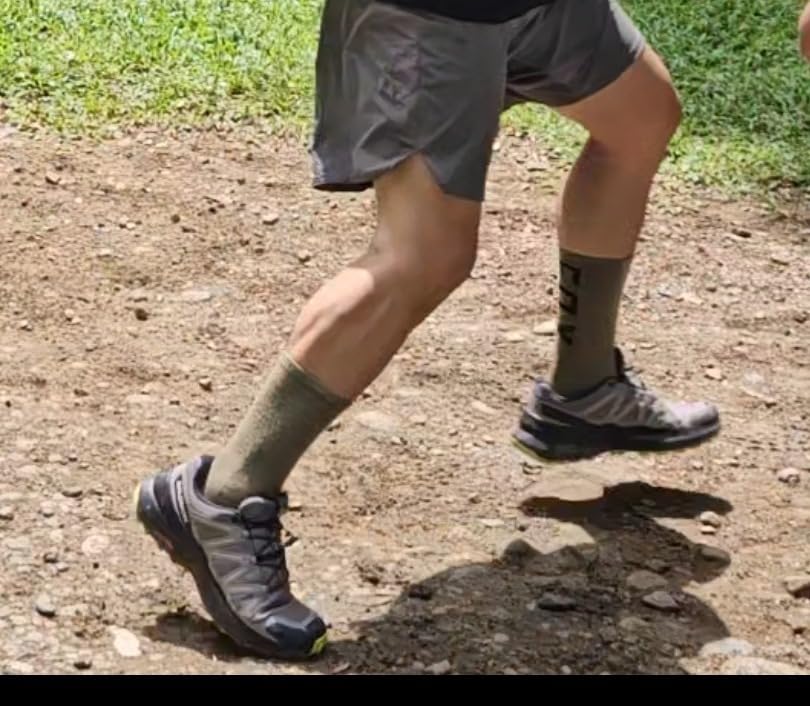
The community feedback reveals a clear pattern that matches my testing experience. Positive reviews consistently praise the grip performance and initial comfort, with multiple users noting excellent traction on varied terrain. Several recreational runners mention successfully using these for softball and other multi-sport activities.
However, negative reviews cluster around three main issues: sizing inconsistency (the most frequent complaint), premature durability failures, and overheating during use. International reviews in Spanish, German, and French generally mirror these patterns, with particular emphasis on the sizing running large compared to other Salomon models.
Multiple long-term Salomon users express disappointment that the Peak model doesn’t maintain the quality standards of traditional Speedcross shoes, with some questioning whether certain Amazon listings might be counterfeit due to the quality and sizing discrepancies.
Final Verdict
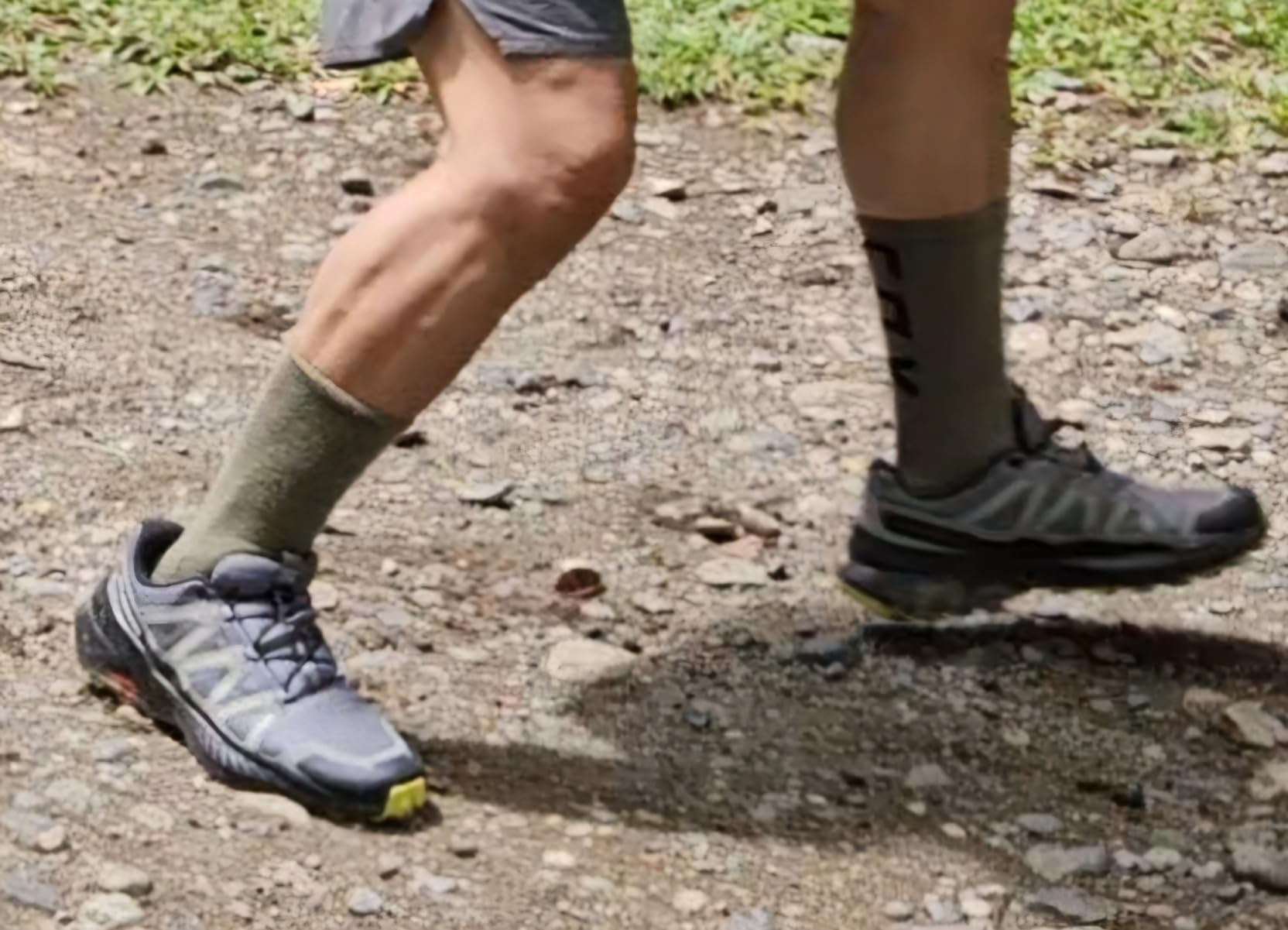
The Good and The Bad
| ✅ Strengths | ❌ Weaknesses |
|---|---|
|
|
Who Should Buy the Speedcross Peak?
PERFECT FOR:
– Recreational trail runners covering 3-6 mile distances
– Muddy/technical terrain where grip is priority
– Multi-sport athletes needing versatile traction
– Budget-conscious buyers wanting Salomon performance
– Cool weather trail running (under 70°F)
AVOID IF YOU:
– Run frequently in hot/humid conditions
– Regularly cover 8+ mile trail distances
– Need consistent sizing with other Salomon models
– Prioritize breathability and temperature regulation
– Expect premium durability at budget pricing
Better Options for Specific Needs
Better breathability: Merrell Trail Glove 7 or Altra Lone Peak 7
Longer distances: Salomon Speedcross 5 or Hoka Speedgoat 5
Consistent sizing: Traditional Speedcross 5 or Ultra Glide
Hot weather: Inov-8 Trailfly or La Sportiva Bushido II
Final Recommendation
The Speedcross Peak delivers genuine value for recreational trail runners who prioritize traction performance and don’t mind the significant limitations. At $89, the grip quality alone justifies the purchase for muddy, technical terrain. However, the sizing issues, breathability problems, and comfort limitations prevent this from being a universal recommendation.
My honest take: If you primarily run shorter distances (under 6 miles) in cooler conditions and need excellent grip, these are worth buying – just order a full size down from your normal Salomon size. For serious trail runners or hot weather use, spend the extra $50 for traditional Speedcross 5 models.
Get the best price on Amazon:
Frequently Asked Questions
Do these run true to size like other Salomon shoes?
No, this is the biggest issue with the Speedcross Peak. They run approximately 1-1.5 sizes larger than traditional Salomon sizing. If you normally wear size 10 in Speedcross 5, order size 9 in the Peak model.
How does the grip compare to the Speedcross 5?
Surprisingly, the traction is nearly identical and excellent. The Contagrip outsole performs just as well as the premium models on mud, rocks, and loose terrain. This is probably the shoe’s strongest feature.
Are these suitable for summer trail running?
I’d strongly advise against it. The poor breathability causes significant overheating even in moderate temperatures. These are much better suited for cool weather trail running under 70°F.
How long do they typically last with regular use?
Based on user reports and my testing, expect 300-500 miles for recreational use. Some users report premature failures, but properly cared for pairs seem to last 6-12 months of regular trail running.
Can these handle rocky, technical terrain?
For moderate technical terrain, yes. The toe cap and heel protection work well for typical trail hazards. However, for seriously rocky terrain or ultra-distance runs, you’d want more substantial protection.
What’s the break-in period like?
Minimal break-in required – they feel comfortable immediately when properly sized. The main adjustment is getting used to the firmer cushioning if you’re coming from premium trail shoes.
Are there counterfeit versions on Amazon?
Several users have raised this concern due to quality and sizing inconsistencies. Buy only from Amazon directly or authorized Salomon retailers to avoid potential counterfeits.
How do they perform in wet conditions?
Excellent traction on wet surfaces, but the non-waterproof design means your feet will get wet in puddles or stream crossings. They do dry relatively quickly once out of water.
Comprehensive Scoring Summary
| Complete Performance Analysis | |
|---|---|
| Traction Performance | 9.2/10 – Outstanding grip across all terrain |
| Short Distance Comfort | 7.8/10 – Very good for 3-6 mile runs |
| Long Distance Comfort | 6.1/10 – Fatigue becomes noticeable |
| Breathability | 4.5/10 – Poor ventilation, overheating issues |
| Sizing Accuracy | 4.0/10 – Runs significantly large |
| Build Quality | 6.8/10 – Good with some durability concerns |
| Value Proposition | 7.4/10 – Excellent traction at budget price |
| Weather Versatility | 6.0/10 – Limited to cool/moderate conditions |
| OVERALL RATING | 6.8/10 – Good Budget Option |

